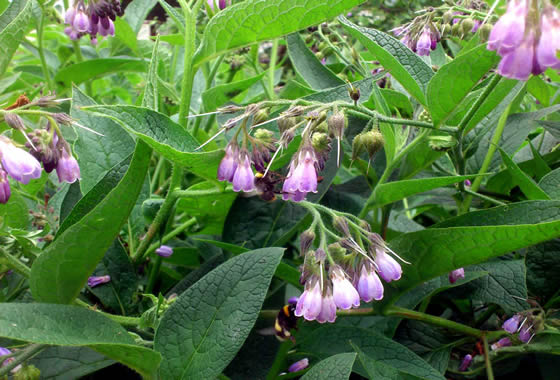Herbal Spotlight: Comfrey
One of the compost crops we grow in our Biointensive gardens that also has health benefits is Symphytum officinale, most commonly known as comfrey. This beautiful plant, which has large green leaves and delightful purple bell-shaped flowers, provides us not only with biomass for the compost, but also with numerous healing benefits. Both the leaves and roots can be used by herbalists for healing internal and external ailments. Comfrey has several medicinal actions. It is known as a vulnerary and an astringent. These properties make it useful in healing minor injuries of the skin, where it works to increase cell production, causing wounds to heal over rapidly. It can be used internally for stomach ulcers, where it will have the same effect, soothing and healing. Comfrey is a demulcent, producing a mucilage that coats and soothes irritated tissues. It helps reduce inflammation, and at the same time lessens scarring. It also has astringent properties that can help control slow bleeding. Comfrey can also be used as an expectorant and has a relaxing effect on the respiratory membranes making it useful for easing coughs, asthma, and bronchitis. The root can be made into a tea, but should only be used in small doses and for short periods of time. There is much controversy amongst herbalists whether comfrey should be used internally since it contains substances known to be toxic to humans. However you choose to use it, comfrey is a wonderful plant to have growing in the garden. It reproduces and spreads easily, so once you start growing it, you'll have it for many seasons to come! How to Make a Comfrey Salve
NOTE: The content in this article is meant to inform, not to diagnose or treat any ailment. Always use common sense and consult with your healthcare provider before attempting to treat yourself or others.
top | Newsletter Home |Table of Contents| Archive
|



